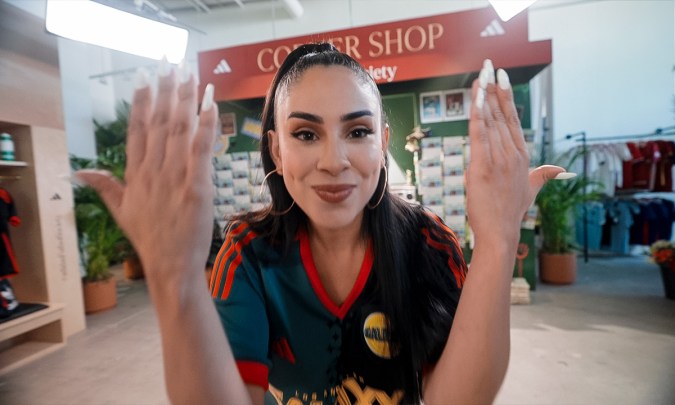It’s well known that Latines are the most passionate fútbol fans; not surprising, the sport is the most popular in Latin America. To reaffirm such sentiments, Remezcla and adidas teamed up to explore a joint mission: to uplift the nuance of this passion for fútbol through adidas Fútbol Society and Radio Colores, a video extension of our Colores series that combines art, storytelling, and the biggest sport in the world. We aim to bring fans closer to the larger community that makes up this fandom.
Through a series of articles, Colores has been Remezcla’s way of getting deep into the fútbol culture by capturing its essence as well as the different disciplines and people around it. It’s a celebration of the unique connection of fútbol and the Latine community.
Colores has been a way to explore the sport, its players and its fandom through thoroughly written features and interviews, Radio Colores brings the experience in a more immediate and personable way; the latter opens up to bigger conversations and a wider array of topics.
Setting shop at adidas’s Fútbol Society pop ups across the U.S., Radio Colores brought this concept to the next level. We invited both players and artists to these spaces—brought by the iconic sports brand to celebrate fútbol culture—share the passions that unite them as well as what makes each individual unique in their fields. We get a bigger picture of why fútbol is such an important and magnificent phenomenon of our community.
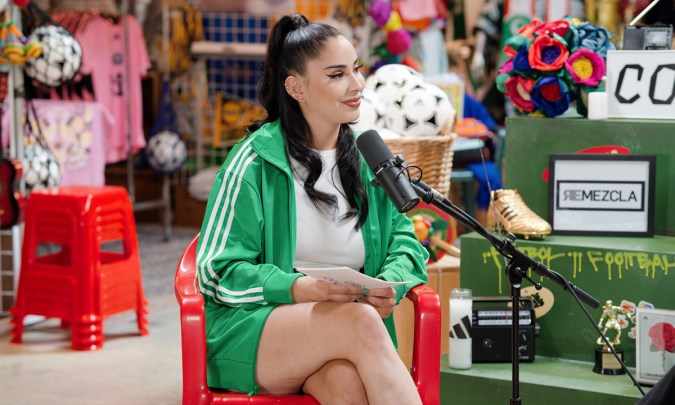
Jessica Flores, a well-known Mexican and Colombian creative and athlete, is the perfect host for this series, having also played in USC Women’s Soccer in her collegiate years, as well as her continuing work in radio both in front and behind the microphones, not to mention her career as a recording artist.
STOP 1
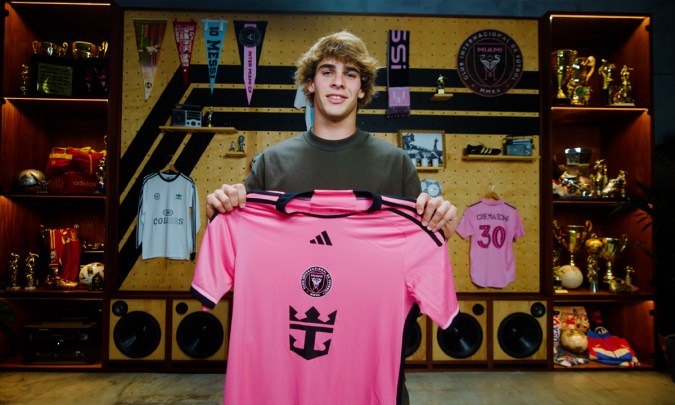
Radio Colores kicked off in Miami to meet with Inter Miami CF player Benjamín Cremaschi, who talked about living his dream as a kid, the music he plays before gameplay, and more. “Giving the assist to Messi when he points at me is something that I never thought would happen in my life,” he reminisces about one of his most treasured experiences so far in his career.
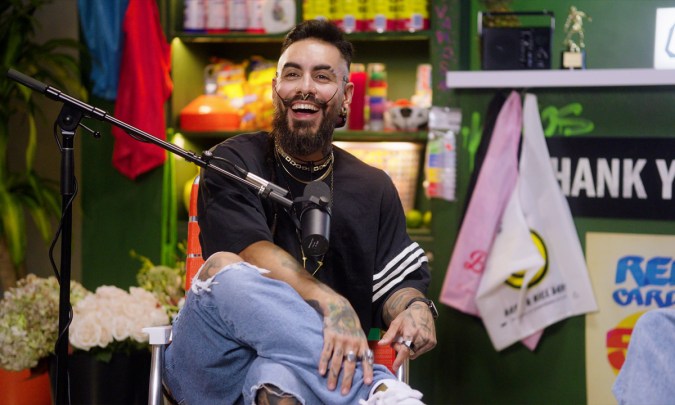
Messi also makes a special appearance in the interview with muralist Arlex Campos, who compared his ambitions to be the top at his field to the Argentine fútbol legend. Campos shared his portrait of the captain of Venezuela’s national team, as well as painting the first mural that featured Messi with the Inter Miami jersey.
STOP 2
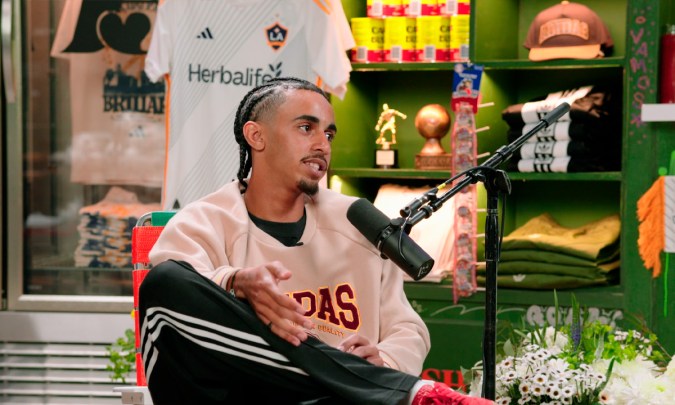
Stop two is all about El Tráfico, the MLS classic game between L.A. Galaxy vs. L.A.F.C, and for this one, Flores interviewed one player from each team. Jalen Neal from L.A. Galaxy is one of the youngest players of the MLS, having been called to the U.S. Men’s National Team training camp at age 19; Tomás Ángel from L.A.F.C., meanwhile, is the son of Juan Pablo Ángel, a legend in Colombian fútbol.
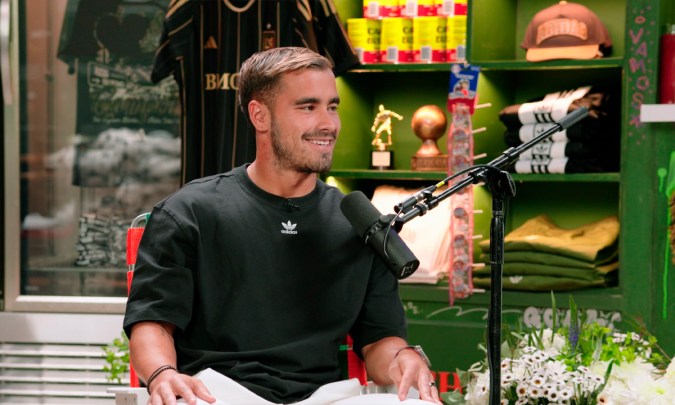
In this episode, both spoke highly about the fans’ involvement in the big game while also disclosing the diversity of music that gets played in the lockers, from hip-hop to reggae to salsa to Brazilian funk.
STOP 3
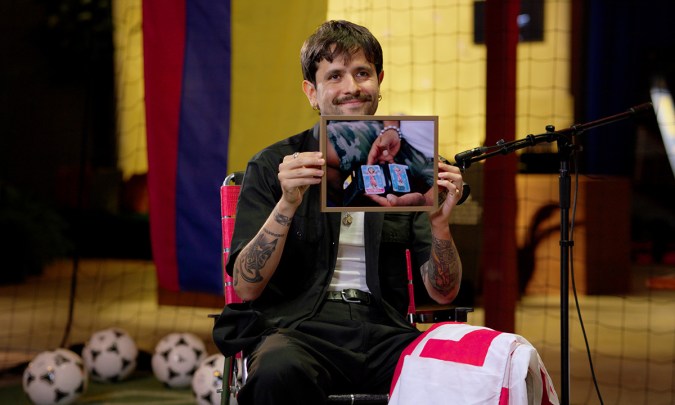
Stop three takes place in New York City and delves deeply into visual art with Mateo Arciniegas Huertas. A Bogotá-born, Brooklyn-based photographer and artist, Huertas specializes in installations that integrate fútbol culture in his work; this helps him frame the Latine community’s special bond beyond borders and prejudice. “Fútbol has become key to overcome [sic] racism, classism, elitism,” he says. “Nothing else in the world has that reach that maybe fútbol has.” He continued to discuss recontextualizing “trapos” or banners from barras bravas to express vulnerable emotions.
STOP 4
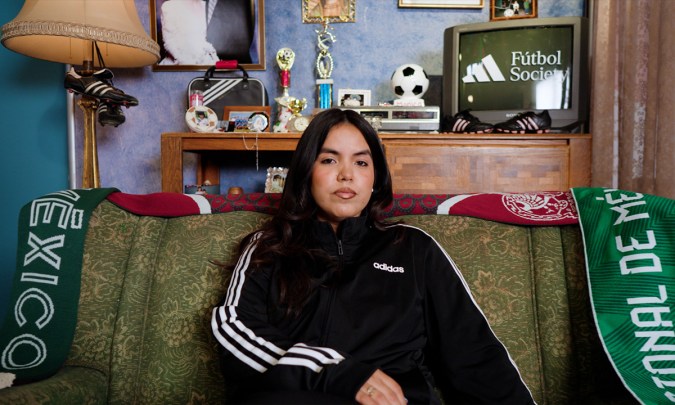
For stop four, we go back to L.A. to meet Mónica Zulema and Omar Campos, two different personalities that share a love for what they do. Zulema is a photographer, director, and multimedia artist who portrays Los Ángeles lifestyle and culture, which of course include fútbol. For this stop, she created trading cars in which women appear wearing national teams jerseys to promote Copa América.
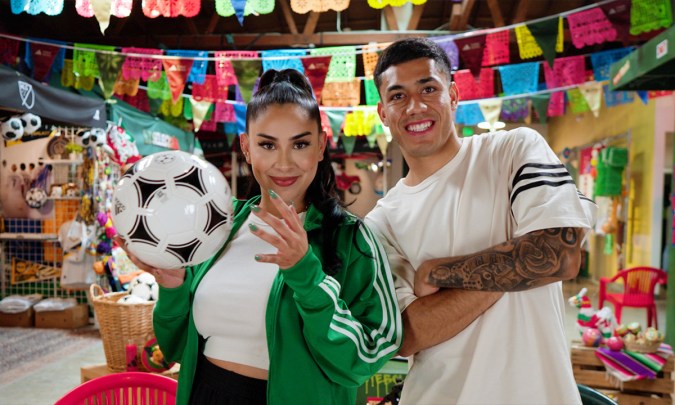
On the other hand, Campos is a Mexican left back who grew up in the fierce Tepito barrio, he’s now moved to the big leagues, and here, he remembers his roots, his upbringing, and why his family dedicated a José José song to him.
STOP 5
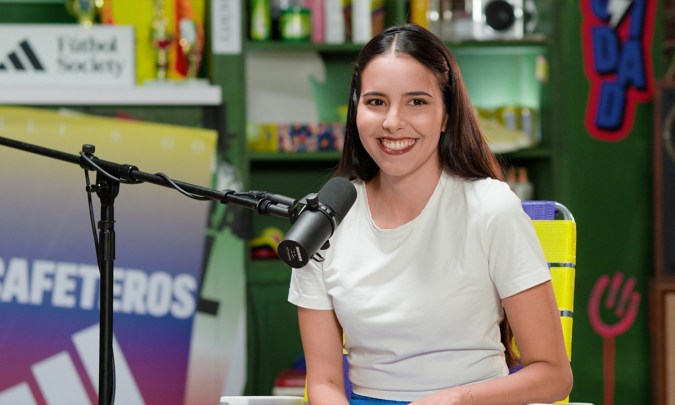
Miami served as the stage for stop five where we met Lili Cantero, a Paraguayan artist who specializes in using cleats as her canvas; her work has been exhibited in the U.S, Mexico, Argentina, and Qatar. Here, Cantero talked about “the feminine power” to create and its importance to the sport. “Fútbol is an opportunity to grow in life,” she said. She also opened up about the challenges of women in the art world and how Messi saved her from giving up on her dreams.
STOP 6
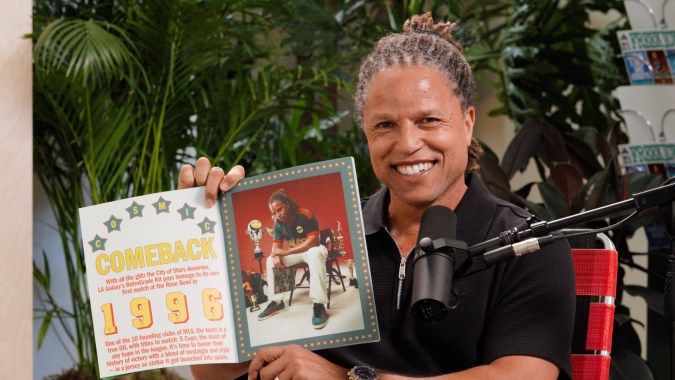
For the sixth and last stop, we return to where we started, L.A., to meet an icon, Cobi Jones. One of the foremost players, coaches, and authorities in U.S. fútbol, the Hall-of-Famer sat down with Flores to walk down memory lane, reflect on what makes a team so special, and bonding with people from different backgrounds thanks to the sport. He also joked about not liking everyone on the team. “You have to find a way to come together to get to that goal,” he said. “If you’re able to do that, you usually find success.”
Radio Colores is a perfect snapshot of fútbol in 2024 that’s assembled by personable and detailed stories, all of which paint a larger picture of what makes fútbol so great. By learning the stories of everyone united by this sport, we get to appreciate this passion that bonds countries, cultures, and generations alike.
